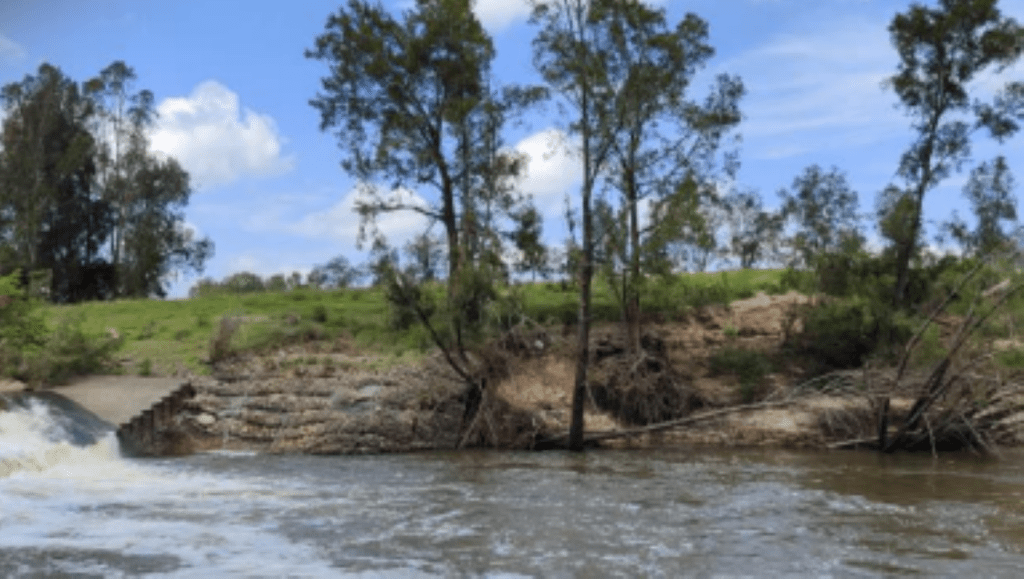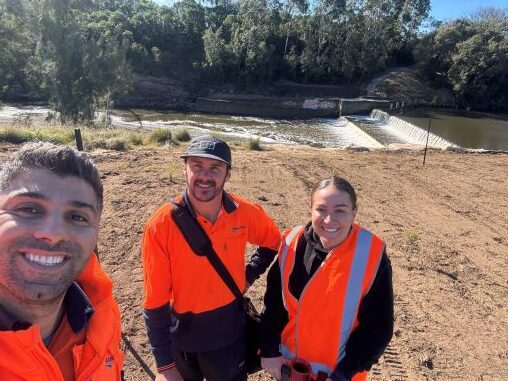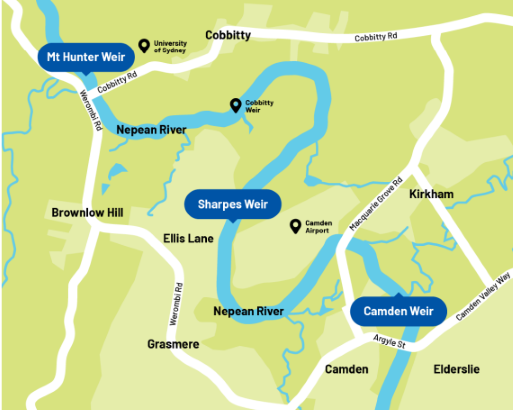

WaterNSW is busy repairing the banks of the Nepean River at Camden Weir, where flooding has eroded the soil and made the riverbanks less stable.
As well as placing large rocks, they are planting more than 250 native plant species along the banks, including the endangered Camden White Gum.
“Plant roots help to hold riverbanks together, stabilising the soil and reducing the likelihood that it will slip into the river in future flooding events,’’ a WaterNSW spokesperson said.
“The work will stabilise the riverbank and prevent further damage to the weir structures, improve environmental resilience, support the long-term health of the river system and protect adjoining properties.
“The work will include establishing temporary access roads and site compound areas, removal of vegetation and unstable soil, reshaping and stabilising the embankment, placing textiles and large rocks to stabilise the riverbank.
“All areas impacted by the work will be fully restored.
“The work will not impact water supply or quality, or river and weir access during this time. Environmental controls will be in place during the work.’’
WaterNSW teamed up with the Threatened Species Unit of the department of climate change, energy, the environment and water, and local Aboriginal traditional owners for the revegetation, selecting local native plant species.
WaterNSW project manager Joy Mtanious-Abdallah and cultural heritage field advisor Duane Byrnes then joined forces with Cubbitch Barta Dharawal woman Kirsty-Lee Chalker to get their hands dirty planting at the site.

“Revegetation to me isn’t just environmental work,” Kirsty-Lee said.
“It’s spiritual, it’s healing and its emotional. Mother earth responds, the water flows differently, the winds shift, the birds return, country revives.”
WaterNSW is also making similar flood repairs at Sharpes and Mt Hunter weirs.
And it has also started planning for the future of Camden and Sharpes weirs, which are nearing the end of their usable life, due to age and asset deterioration.
“We are exploring strategic options for the long-term sustainability and use of the weirs,’’ the spokesperson said.
“This process will consider a range of factors including environmental, operational, and community needs.
“Following this assessment, WaterNSW will engage with key stakeholders and the community to discuss future plans for the weirs.’’
